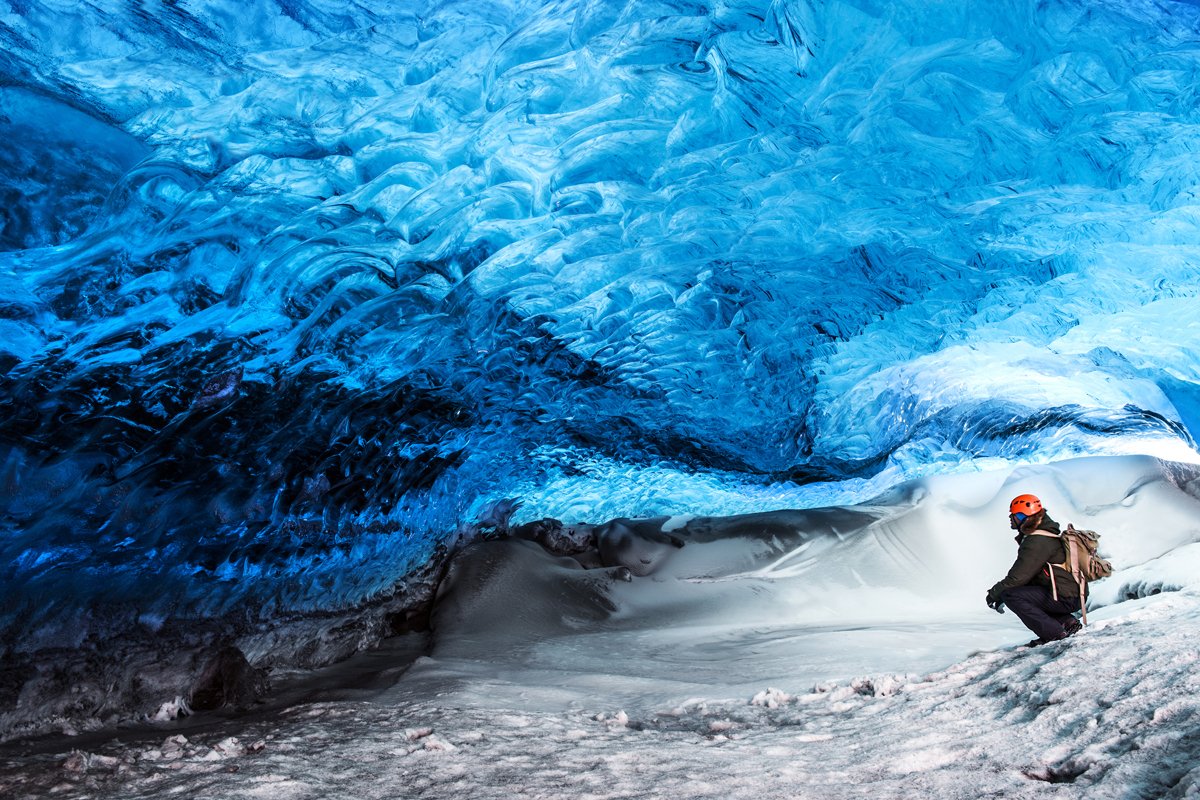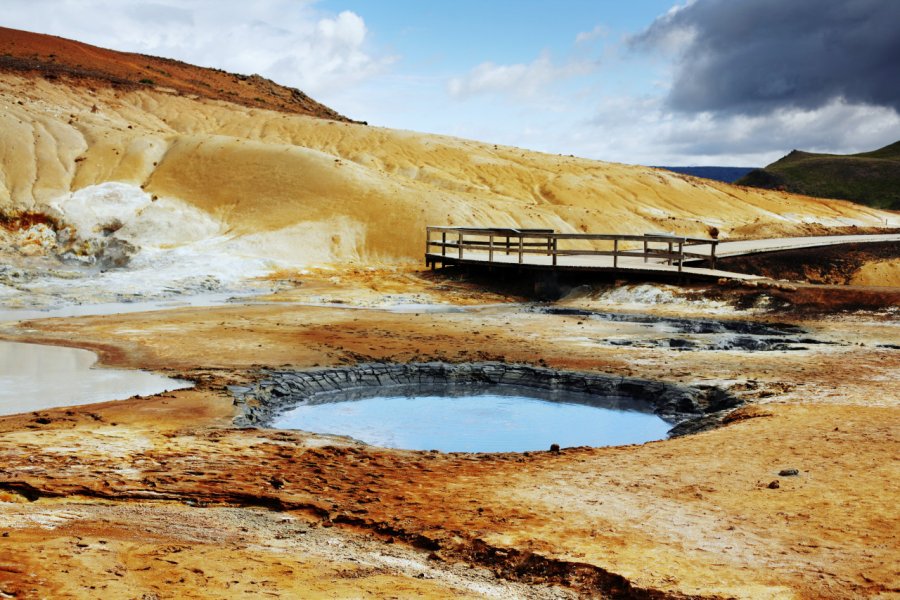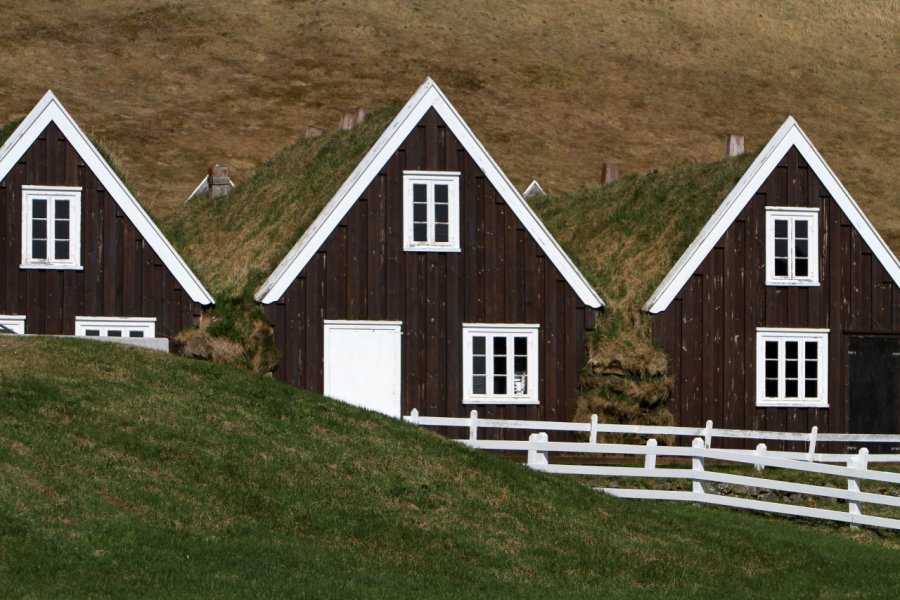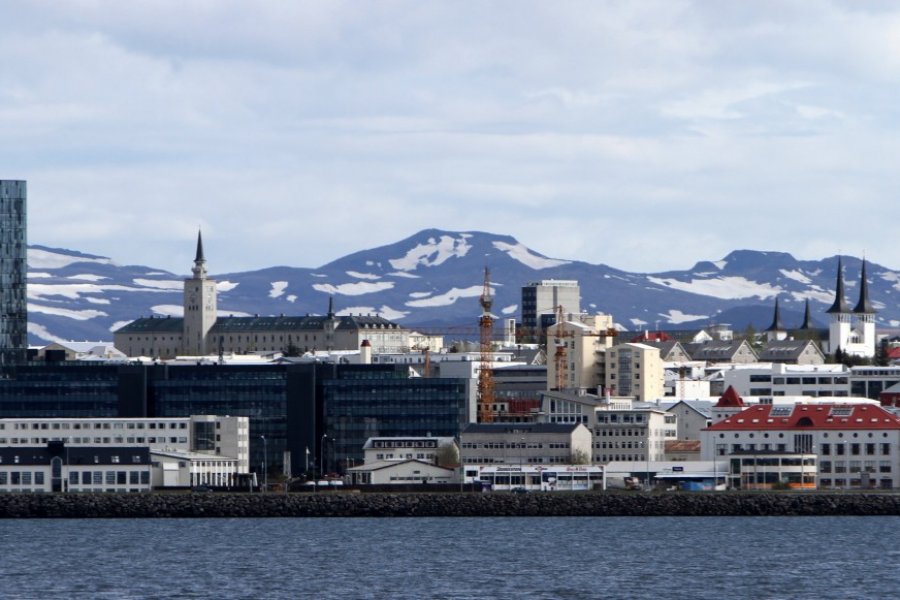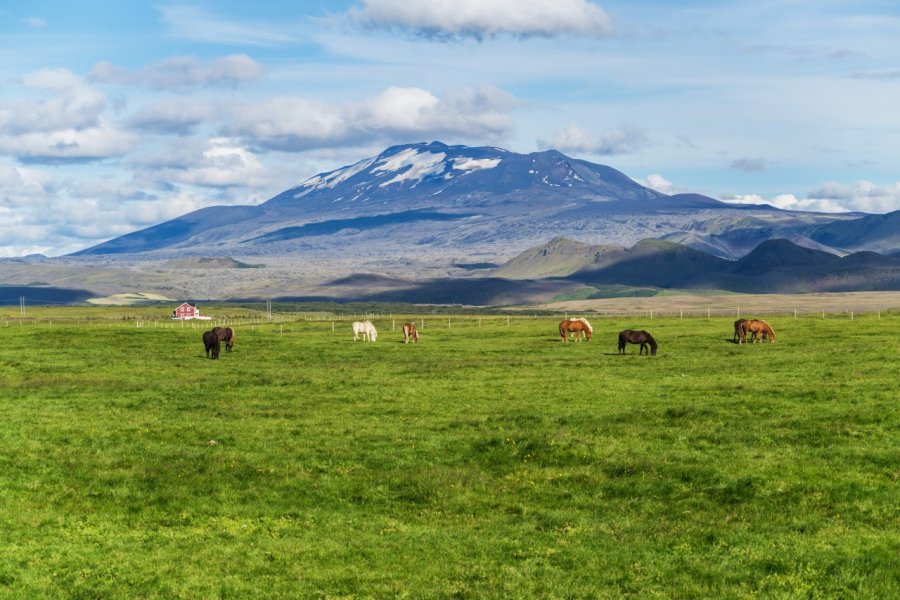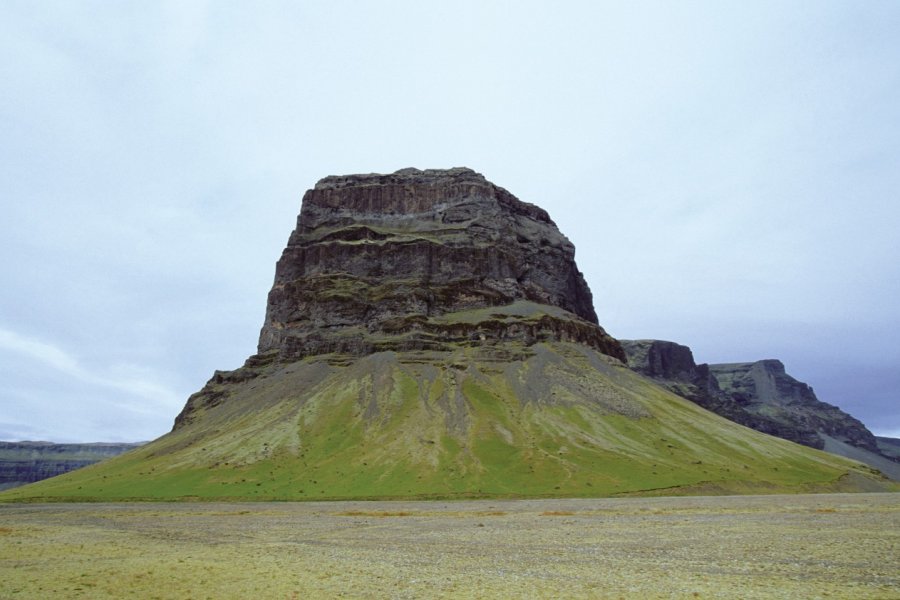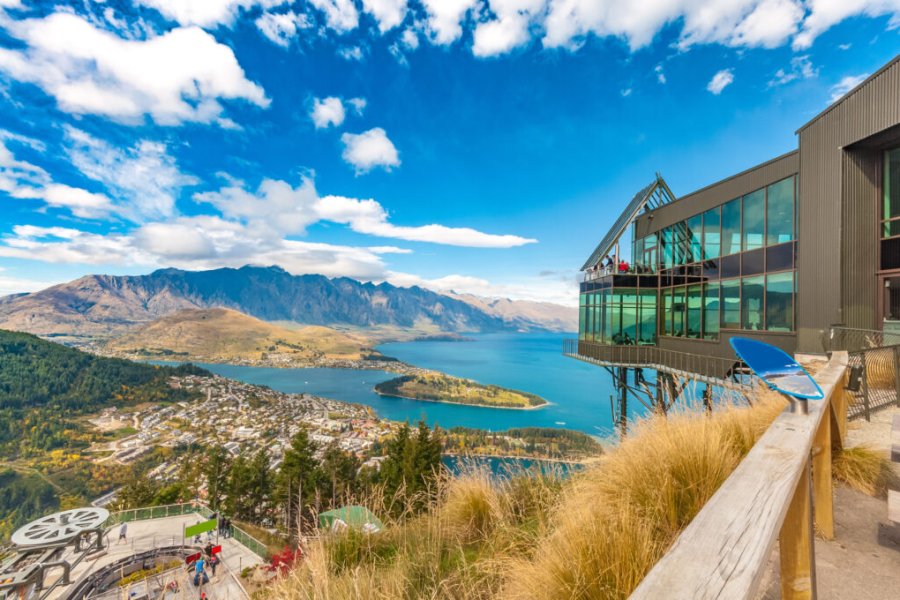Volcanoes, glaciers and geothermal energy in southern Iceland
Highlights of the trip
During your stay you can enjoy the following highlights: Culture / Heritage, Faune and flora, Adventure / Sports & Leisure.
Best times to go
The best time(s) to go is/are : Eté.
Where to stay in : Reykjanes ?
The map of your stay "Volcanoes, glaciers and geothermal energy in southern Iceland"
Detail of the stay : Volcanoes, glaciers and geothermal energy in southern Iceland
How to get there - Reykjanes
Reykjanes Peninsula

Steps: Hveragerði
The Reykjanes peninsula contains one of Iceland's best-known power plants, Svartsengi, which draws steam from the ground and supplies water to neighbouring communities through a 300 km network of pipes. The excess water flows into the Blue Lagoon, which is known to treat skin conditions such as psoriasis. Krísuvík is another example of the region's activity, with its solfataras and bubbling mud ponds. Overnight in Hveragerði, a village characterized by its geothermal greenhouses.
Westmann Islands

Steps: Vestmannaeyjar
Þorlákshöfn, a small port south of Hveragerði, takes tourists to the Westmann Islands, also known as the Vestmannaeyjar Islands, by ferry every day. The largest island in the archipelago, Heimaey, experienced a devastating eruption in 1973. The spilled lava contains enough energy to power Vestmannaeyjar for 4,000 years. Night on the island of Heimaey
Nesjavellir and Þórsmörk

Steps: Hella
After taking the ferry, another geothermal place of interest is Nesjavellir, not far from Reykjavík. The Geysir area is also one of Iceland's most famous attractions, thanks to the sumptuous spectacle of the Strokkur geyser and the fumaroles which border it. An oasis surrounded by three glaciers, Þórsmörk is one of the most beautiful landscapes in Iceland. However, the roads to get there require crossing dangerous rivers. Night in Hella.
Places of interest : GEYSER ARTIFICIEL (STROKKUR) ÞÓRSMÖRK
Hekla Volcano and Eldgjá Gorge

Steps: Kirkjubaejarklaustur
The study of the unpredictable Hekla volcano precedes a few moments of relaxation in the hot springs and landscapes of Landmannalaugar. This is followed by a passage through Ófaerufoss Falls, established in the Eldgjá gorge, before returning to a 4x4 track that leads straight to the overnight stop, Kirkjubaejarklaustur.
Places of interest : ELDGJÁ
Skaftafell Park

Steps: Skaftafell
In 1783, the Lakagígar fissure released the largest flow of lava in Iceland's history. Today, a multitude of pseudo-craters line the landscape, which has been completely ravaged by the eruption. The circular road then leads to Skaftafell National Park, which offers many walking paths to observe the glacier tongues of Vatnajökull. Shortly before arriving in Skaftafell to spend the night, a track of a few kilometers leads straight to a glacier which imposes itself with violence with the turning of a last turn.
Places of interest : VATNAJÖKULL
From Vatnajökull to the Breiðárlón and Jökulsarlón glaciers
Steps: Höfn
Covering no less than three volcanoes, Vatnajökull experienced a devastating eruption in 1996. Tour operators offer day or half-day excursions on its glacier tongues, ranging from walks with crampons and jeep rides to climbing steep walls. In the region, a glacier information centre provides information on the development of these imposing moving masses. Before spending the night in Höfn, the observation of lakes Breiðárlón and Jökulsarlón will reveal, in the heart of a magical universe, the secrets of melting ice.
